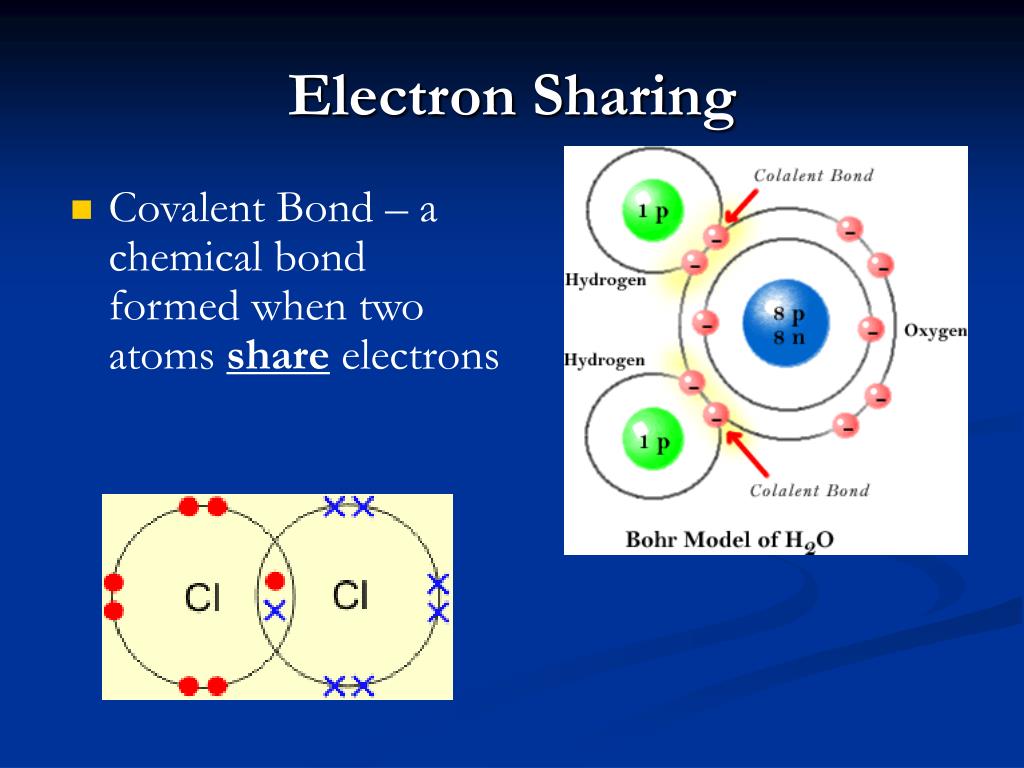The symbol for this is a double dash or equal sign between the two atoms, like o=o. The six in the lone pairs and the two in the single bond. Web if a pair of atoms has a slight positive charge, sharing electrons lets them balance their charge and a bond is formed. Web covalent bonds are formed when atoms share electrons. A covalent bond is formed when two atoms share electron pairs.
Web each atom donates a single electron to the electron pair which is shared. An atom that shares one or more of its electrons will complete its outer shell. In covalent bonding electrons are shared between two atoms. Lewis electron dot diagrams can be drawn to illustrate covalent bond formation.
Because the spins are paired, the magnetic moment of the electrons cancel one another, and the pair's contribution to magnetic properties is generally diamagnetic. It is this sharing of electrons that we refer to as a chemical bond, or more specifically, as a covalent bond, so named because the bond acts to satisfy the valence of both atoms. In a single covalent bond, two atoms share one pair of electrons.
Web covalent bonds are formed when atoms share electrons. If the atoms are identical, like two hydrogens forming \ce {h_ {2 (g)}} hx 2(g), then the bond is purely covalent. Web a double covalent bond is a covalent bond formed by atoms that share two pairs of electrons. Because the spins are paired, the magnetic moment of the electrons cancel one another, and the pair's contribution to magnetic properties is generally diamagnetic. These electron pairs are known as shared pairs or bonding pairs.
Web covalent bonds are formed when atoms share electrons. What is the difference between covalent and ionic bonding? Because the spins are paired, the magnetic moment of the electrons cancel one another, and the pair's contribution to magnetic properties is generally diamagnetic.
Web If A Pair Of Atoms Has A Slight Positive Charge, Sharing Electrons Lets Them Balance Their Charge And A Bond Is Formed.
They also fill the core levels of an atom. If the atoms are identical, like two hydrogens forming \ce {h_ {2 (g)}} hx 2(g), then the bond is purely covalent. Web covalent bonds exist as single, double, or triple bonds. Double bonds or triple bonds between atoms may be necessary to properly illustrate the bonding in some molecules.
In A Double Bond, Atoms Share Two Pairs Of Electrons.
This page introduces the way atoms can bond together by sharing electrons in single covalent bonds, and the various ways you can show covalent bonds on paper. Each cl atom interacts with eight valence electrons: When two atoms form a covalent bond, they share their valence electrons in order to achieve an octet (8 valence electrons), except for hydrogen which bonds to achieve a duet (2 valence electrons). The binding arises from the electrostatic attraction of their nuclei for the same electrons.
Web A Single Shared Pair Of Electrons Is Called A Single Bond.
A covalent bond is formed when two atoms share electron pairs. A covalent bond forms when the bonded atoms have a lower total energy than that of widely separated atoms. Web each atom donates a single electron to the electron pair which is shared. Because most filled electron shells have eight electrons in them, chemists called this tendency the octet rule.
Lewis Electron Dot Diagrams Can Be Drawn To Illustrate Covalent Bond Formation.
This is illustrated on the right. The six in the lone pairs and the two in the single bond. An atom that shares one or more of its electrons will complete its outer shell. Covalent bond is a chemical bond that involves sharing of electron pairs between atoms.
Because most filled electron shells have eight electrons in them, chemists called this tendency the octet rule. This page introduces the way atoms can bond together by sharing electrons in single covalent bonds, and the various ways you can show covalent bonds on paper. Web each atom donates a single electron to the electron pair which is shared. Let’s consider both types of bonds in detail. The stable balance of attractive and repulsive forces between atoms, when they share electrons, is known as covalent bonding.


![[ANSWERED] What do atoms form when they equally share electron](https://i2.wp.com/media.kunduz.com/media/sug-question-candidate/20220511034952883386-4536923.jpg?h=512)



